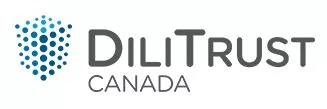Your business has probably shifted most of its technology use to the cloud so as to save money and be more efficient.
The question is no longer why you should move to the cloud, but how you can make the best use of corporate legal software for document management and other tasks. Over the years you may have installed a series of solutions, leaving your staff with various logins for different tasks, which makes big picture reporting difficult.
WHAT IS SOFTWARE-AS-A-SERVICE (SAAS)?
SaaS is software that resides neither on your computer nor on a physical on-premise server, but in the cloud. Most software that businesses use today falls into this category. G Suite and Microsoft Office 365 are examples of SaaS solutions.
With very few exceptions, the old model of purchasing one piece of software for one computer is dead. With SaaS, you only pay for the number of users and any custom programming your company may need for the initial setup. In addition, SaaS solutions can be accessed from anywhere in the world your employees can log on to the Internet.
It is now widely accepted that using cloud technology keeps businesses agile and disaster-proof. In many cases, it is also more affordable than legacy software and hardware solutions. IBM lists flexibility, agility, and strategic value as the three main benefits of cloud computing.
UNTANGLING YOUR PATCHWORK QUILT OF SAAS SOLUTIONS
People who work in corporate legal departments resent being labeled as Luddites. Nobody is more interested in working more efficiently than a lawyer who has cases and contracts clogging up their inbox. The problem with legal department technology use is not its rate of cloud adoption, but the fact that It Is comprised of many different solutions.
One app may keep track of hours and another may be used for document management. Most cloud technology solutions that corporate legal departments are using are designed for law firms, which means vital features may be missing. On the other hand, these solutions come with features you will never use, such as the ones that pertain to billing and/or marketing.
Your current software may not meet Canadian or international data privacy regulations, such as PIPEDA and the GDPR. Your legal department is better off with one SaaS solution designed specifically for the corporate legal world.
Cloud Security: A Necessity for any SaaS Solution
Another problem with having different solutions for different tasks is that security could easily be lacking with one or more of those solutions. Since most files that a legal department handles are sensitive in nature, every solution should be locked down as securely as possible. File access control should also be in place so that only relevant users can log in to projects or files. Establishing cybersecurity measures is a proactive measure to keep your business from violating data privacy regulations; preventing a security breach, rather than reacting to it after the fact, is always advisable.
Here are some of the security items you should look for in a SaaS solution for your legal department:
Two-Factor Authentication
Simply signing in with a password and username is not enough to make logins safe. Two-factor authentication prevents security breaches by requiring an additional piece of information to log in to an account. It can be a code sent by text, a physical USB key that will only allow a login if it is plugged into the device you are using, etc. This reduces the possibility of breaches as an attacker would have to have not only your password and username but the second part of the authentication as well.
Secure Hosting
The solution itself should be hosted on servers that are certified to the ISO 27001 international standard. The standard guarantees a set guideline is followed for data safety and various control measures. It should also undergo internal security testing as well as occasional intrusion testing. While most SaaS solutions have various security measures in place, most are hosted with Amazon Web Services (AWS), rather than being privately hosted; this makes them much harder to find and adds an additional level of security, as the company has complete access control.
For a corporate legal department, cybersecurity is almost as important as functionality. In the initial days of internet use, the argument for not moving paper files to digital was that it was less secure. Back then, that may have actually been the case. Today, there are so many security measures that digital storage is definitely more secure - and disaster-proof - than paper files.
The content of this article is intended to provide a general guide to the subject matter. Specialist advice should be sought about your specific circumstances.

